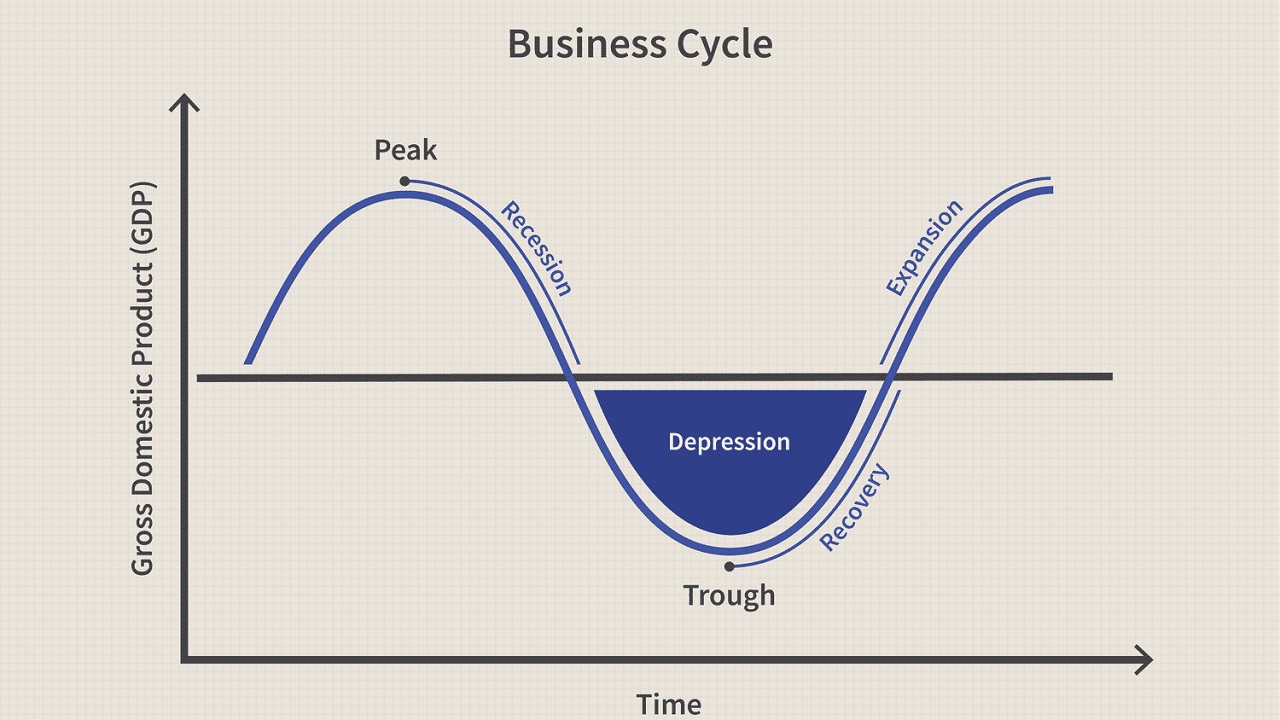Understanding and leveraging the economic cycle is a critical skill for strategic investors. By identifying the right timing and market trends, you can optimize portfolio performance, minimize risks, and enhance long-term returns.

Economic cycle: structure and characteristics
The economic cycle consists of four main stages:
Recovery: The economy begins to grow again after a recession, employment improves, and consumer confidence gradually recovers.
Expansion: Businesses operate at high capacity, profits rise, and investment markets flourish.
Peak: Inflation and interest rates increase, growth slows down, and the risk of market corrections becomes higher.
Recession: Negative growth, rising unemployment, and declining markets.
Each stage impacts market sentiment and asset performance differently. Therefore, analyzing the market according to the cycle is the first step in establishing a suitable investment strategy.

Building a portfolio by cycle: what to invest in and when?
There is no fixed formula, but the following principles can help optimize your portfolio structure:
-
Recovery: Prioritize growth assets such as cyclical stocks, technology companies, and real estate.
-
Expansion: Focus on high-quality stocks, sector ETFs, and growth dividend funds.
-
Peak: Shift toward defensive assets such as healthcare, consumer staples, and bonds.
-
Recession: Increase cash holdings, invest in short-term bonds, and selectively buy undervalued stocks if you have a long-term outlook.
Portfolio adjustments should not occur too frequently, but periodic rebalancing is essential – at least once or twice a year, or when there are clear economic signals.

Market analysis: how to identify the right stage?
Several common indicators can help track the economy’s position in the cycle:
-
GDP growth and unemployment rates,
-
Inflation trends and interest rate policies,
-
Consumer confidence indices and manufacturing PMI,
-
The yield curve, which often inverts before a recession.
While these indicators are not foolproof, they help estimate market scenarios, enabling you to plan your asset allocation more effectively rather than reacting emotionally.

-> Learn more: Effective asset allocation: Is the 60 – 30 – 10 formula still relevant?
Insights from Metti Capital Funding: optimizing strategy with sustainable value
At Metti Capital Funding, investing through the economic cycle is not solely based on economic indicators. We combine cycle analysis with ESG factors (Environmental – Social – Governance). Each portfolio is tailored to the macroeconomic environment, personal goals, and the aim of creating sustainable value.
For example:
-
During the expansion phase, Metti may recommend ESG-focused equity funds in clean technology or renewable energy sectors.
-
In times of recession, the portfolio will prioritize green bonds and stable assets with positive social impact.
Metti also provides real-time cycle analysis and portfolio performance tools, empowering investors to not only seize the right timing but also understand why each asset class is chosen.

Conclusion
The economic cycle has a profound impact on market behavior. Instead of investing based on emotions, recognizing the current stage and timely adjusting your portfolio will help you control risks and capture opportunities.
With the support of Metti Capital Funding, your investment strategy will be guided by data, sustainable values, and deep market insights—ensuring that your actions are well-timed and aligned with your goals.
——————————
Contact Us
📍 Address: 9191 Bolsa Ave. Suite 211, Westminster, CA 92683
📞 Hotline: +1 (800) 961-8329
📧 Email: we@metticapital.com

